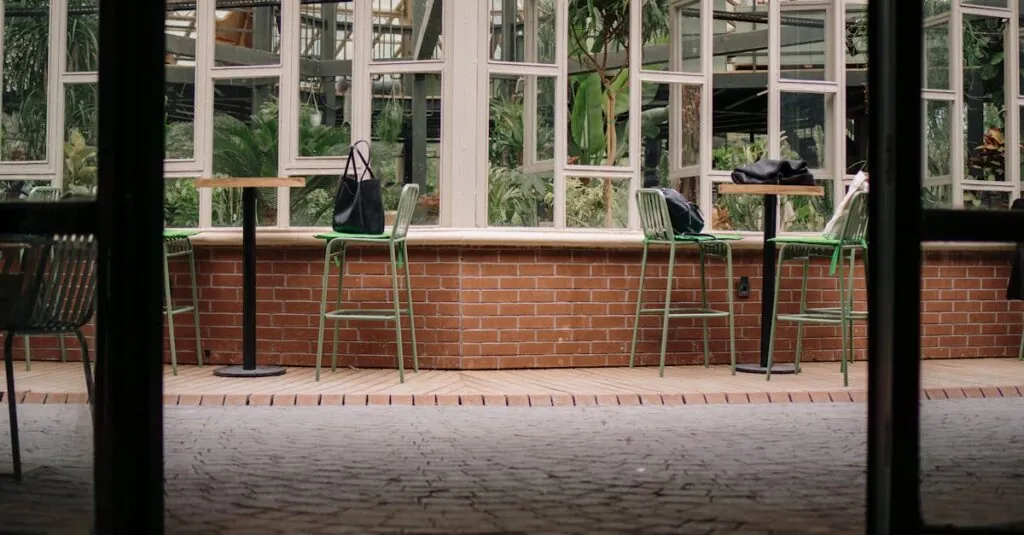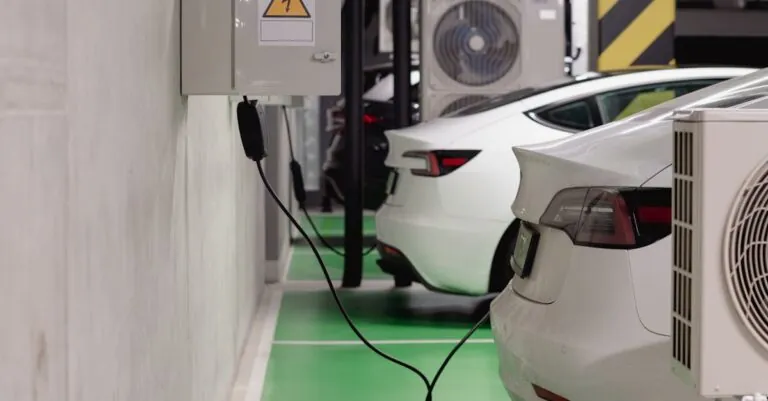Table of Contents
ToggleAs humanity sets its sights on the stars, it’s time to think beyond rocket fuel and shiny metal. Enter eco-friendly space materials—the superheroes of the cosmos, ready to save the universe one biodegradable spaceship at a time. Imagine launching into orbit without leaving a trail of space debris or toxic waste behind. It sounds like a sci-fi dream, but it’s becoming a reality!
These innovative materials not only reduce our carbon footprint but also challenge the status quo of space exploration. From sustainable composites to recycled resources, they’re paving the way for a greener galaxy. So, buckle up and get ready to explore how these eco-friendly materials are revolutionizing space travel. Who knew saving the planet could be this out of this world?
Overview of Eco-Friendly Space Materials
Eco-friendly space materials focus on sustainability in space exploration. Biodegradable materials offer promising alternatives to conventional substances in spacecraft design. For instance, these materials break down naturally, significantly reducing space debris after missions. Sustainable composites emerge as strong contenders for construction, combining durability with environmental consciousness.
Recyclable metals and plastics contribute to these initiatives by enabling reuse and minimizing waste generation. Spacecraft employing these substances can operate efficiently while adhering to eco-friendly principles. Innovations in green manufacturing processes enhance these materials’ viability, ensuring they meet rigorous space standards.
Significant research supports the development of energy-efficient technologies. Solar panels made from eco-friendly materials now power spacecraft, diminishing reliance on harmful fuels. Advances in lightweight designs further push the boundaries of traditional methods in space travel.
Regenerative electronics represent another evolution in eco-friendly practices. These systems integrate sustainable components that can prolong life spans and reduce e-waste. Furthermore, incorporating natural resources, such as bio-based fuels derived from algae, showcases a creative approach to sustainable space operations.
Commercial and governmental organizations increasingly back these innovations, recognizing their importance in fostering a greener future for the cosmos. As the demand for responsible exploration rises, so does the commitment to utilizing eco-friendly materials in all aspects of space travel, aligning with global sustainability goals.
Importance of Sustainable Space Exploration
Sustainable space exploration is vital for minimizing the ecological footprint of aerospace activities. Various eco-friendly materials contribute to a greener future in space travel.
Reducing Environmental Impact
Innovative materials like biodegradable substances significantly lower the production of waste in space. Utilizing sustainable composites aids in minimizing space debris while enhancing spacecraft durability. Recycling metals and plastics not only reduces waste but also promotes efficient use of resources. By implementing green manufacturing processes, the aerospace industry diminishes its reliance on harmful substances and energy-intensive practices. These initiatives reflect an essential step towards protecting Earth’s environment from the adverse effects of space exploration.
Long-Term Benefits for Space Missions
Sustainable practices offer substantial advantages for future space missions. Enhanced operational efficiency derived from eco-friendly materials leads to cost savings in the long run. Long-lasting biodegradable technologies decrease the need for extensive waste management in orbit. Innovations such as solar panels made from sustainable materials increase energy efficiency, supporting mission sustainability. Support from commercial and governmental organizations amplifies the positive impact of these sustainable practices on the broader goal of responsible cosmic exploration.
Types of Eco-Friendly Space Materials
Eco-friendly space materials play a vital role in sustainable exploration. They offer innovative solutions to minimize the ecological impact of space missions.
Biodegradable Materials
Biodegradable materials break down naturally over time, reducing space debris significantly. These substances, derived from organic sources, include plant-based composites that comply with eco-friendly practices. When spacecraft designed with biodegradable components reach the end of their lifecycle, they leave minimal ecological footprints, providing safer disposal options. Increasing attention on such materials from aerospace industries highlights their potential benefits. It’s essential to embrace alternatives that align with environmental sustainability goals.
Recycled Materials
Recycled materials serve as practical options for spacecraft construction. They often utilize previously discarded metals and plastics. By repurposing these materials, the aerospace sector not only reduces waste but also saves resources. The use of recycled aluminum in spacecraft structures demonstrates significant reductions in energy consumption during production. Moreover, sustainable sourcing of recycled materials aligns with broader recycling initiatives, advancing environmental responsibility within the industry.
Innovative Alternatives
Innovative alternatives, such as bio-based fuels and natural fibers, are reshaping the future of space materials. These alternatives enhance fuel efficiency while minimizing harmful emissions. Another example includes the development of advanced composites that integrate renewable materials. Emerging technologies facilitate the use of solar panels made from sustainable inputs, offering energy solutions during missions. Prioritizing these alternatives reflects a commitment to mitigating space exploration’s ecological impact and promotes a greener future.
Applications in Space Missions
Eco-friendly materials find numerous applications in space missions, enhancing sustainability while addressing environmental concerns.
Satellite Construction
Sustainable materials are becoming essential in satellite construction. Recycled aluminum, for instance, provides structural integrity while minimizing waste. Biodegradable components offer alternatives to traditional materials, reducing space debris. Innovative composites also contribute to lighter satellite designs, improving fuel efficiency during launches. Using these materials can streamline manufacturing processes, significantly lowering the ecological footprint of satellite production.
Spacecraft Interiors
Interior design in spacecraft increasingly incorporates eco-friendly materials. Natural fibers are gaining popularity for insulation and furnishings due to their biodegradable properties. Non-toxic paints and finishes enhance both safety and sustainability in confined environments. Upcycled materials, such as repurposed plastics, contribute to innovative storage solutions within spacecraft. These developments prioritize health and comfort while maintaining ecological responsibility.
Habitat Development
Habitat development for long-duration missions benefits from the use of sustainable materials. Biodegradable building materials offer safe and efficient options for constructing habitats on other planets. Innovations like mycelium-based composites provide an organic alternative for structural integrity while remaining lightweight. Furthermore, implementing vertical gardens within habitats enhances food production sustainably. Each approach emphasizes reducing resource consumption and making space exploration a greener endeavor.
Challenges and Future Prospects
Innovations in eco-friendly space materials face several challenges and prospects. Addressing these obstacles is crucial for the evolution of sustainable space exploration.
Technological Limitations
Technological constraints hinder the development of eco-friendly materials. Many of these materials lack the durability required for the harsh conditions of space. Performance testing for biodegradable and recycled components remains limited, impacting designers’ confidence. Additionally, integrating these materials into existing designs poses manufacturing challenges. Scientists and engineers must continue to innovate, addressing these limitations to produce reliable alternatives. Ongoing research and development can lead to breakthroughs that enhance the resilience of eco-friendly materials, ensuring they meet industry standards.
Market Acceptance
Market acceptance plays a pivotal role in the adoption of eco-friendly materials. Various stakeholders, including manufacturers and space agencies, must recognize the benefits of sustainable options. Current preferences often lean toward traditional materials, primarily due to perceived risks and costs. Educating industry players on long-term cost savings and environmental benefits is essential. Collaboration between governments, private sectors, and researchers can promote wider usage of innovative materials. Increased awareness and successful pilot projects could encourage a shift towards sustainability in space exploration.
Conclusion
The shift toward eco-friendly space materials marks a significant step in redefining how humanity explores the cosmos. By embracing biodegradable substances and recycled components, the aerospace industry can minimize waste and reduce its ecological footprint. Innovations in sustainable materials not only enhance spacecraft durability but also promote responsible exploration.
As the demand for greener solutions grows, collaboration among stakeholders becomes crucial. Continued investment in research and development will pave the way for overcoming current challenges. This commitment to sustainability reflects a broader understanding of the importance of protecting our planet while venturing into space. The future of space exploration is not just about reaching new frontiers but doing so in a way that respects and preserves the environment.







